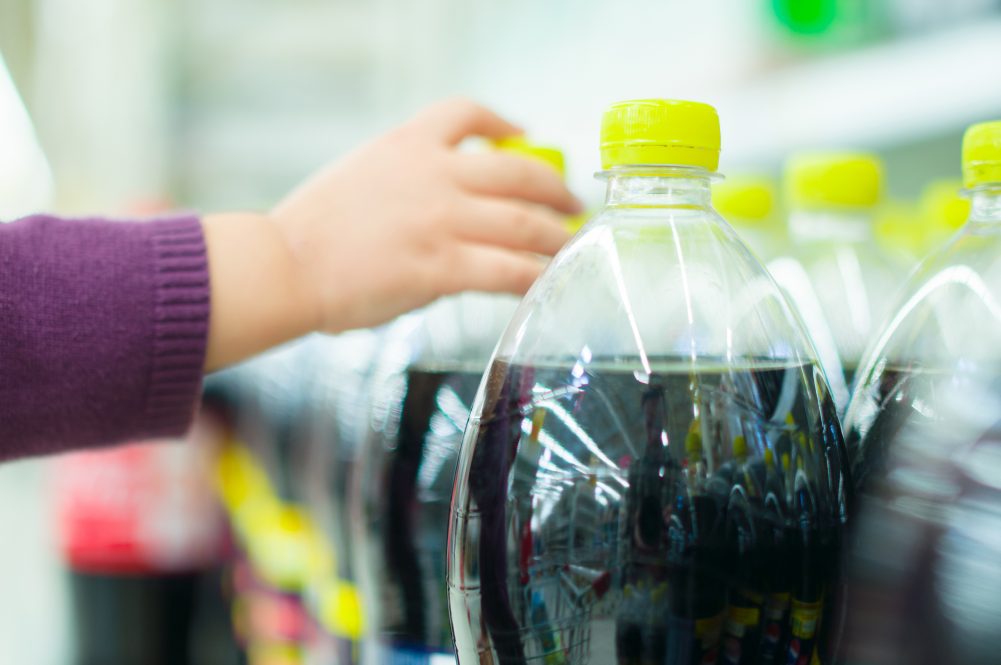Continued extensive advertising that targets children and families, as well as lower prices of sweetened children’s fruit drinks, influence purchasing behaviors of U.S. households with young children, according to a new study from researchers at the Rudd Center for Food Policy and Obesity at the University of Connecticut.
The study’s findings, published today in the American Journal of Preventive Medicine, revealed that households with low incomes purchased more sweetened children’s fruit drinks than households with higher incomes, while households with higher incomes purchased more sugar-sweetened flavored water and unsweetened juices. Non-Hispanic Black and Hispanic households also purchased more fruit drinks than non-Hispanic white households, and Hispanic households purchased more unsweetened juices.
“Companies continue to advertise sweetened children’s drinks, including offering them at lower price points, despite years’ worth of evidence that show such products harm our health. Of particular concern is that advertising is targeted to people in low-income communities and people of color, who are also disproportionately at risk for diet-related diseases, including obesity and type 2 diabetes,” says Yoon Young Choi, the study’s lead author and statistician at the UConn Rudd Center.
The study examined trends over 12 years (2006-2017) in children’s drink purchases (sweetened fruit drinks and flavored water and unsweetened juices) among U.S. households with children ages 1 to 5. The researchers used Nielsen consumer panel data, including demographic information, and Nielsen TV advertising expenditures. They modeled the relationship between marketing (advertising spending, price-per-ounce, and special deals) and household purchases, including differences by household race/ethnicity and income.
Key findings include:
- The amount of money that drink brands spent on TV advertising was directly related to household purchases of the drinks advertised.
- Responsiveness to advertising was disproportionately higher for households with lower incomes.
- Advertising spending on sweetened children’s fruit drinks and flavored water decreased by 68%, whereas unsweetened juice advertising increased by 47%.
- Prices increased for all drink types, but increases were lower (one cent-per-ounce) for sweetened fruit drinks than for unsweetened juice (four cents-per-ounce).
Households with young children (1-5 years old) purchased 27% fewer ounces of children’s fruit drinks (fruit-flavored drinks with added sugar and/or non-nutritive sweeteners) and 12% less unsweetened children’s juices in 2017 than in 2006. However, purchases of sugar-sweetened flavored water (labeled as “water beverage” and containing added sugar and/or non-nutritive sweeteners) increased by 68%. Moreover, households with young children purchased three times as many ounces of fruit drinks than unsweetened juice.
According to a recent study published in the Journal of the American Medical Association, the COVID-19 pandemic is linked to weight gain among children; researchers found a 9% increase in obesity among 5-11-year-olds. Research has also shown that both ultra-processed foods and sugar drinks cause weight gain. In addition, drinking too many sugary drinks can raise the risk of heart disease, high blood pressure, type 2 diabetes, and tooth decay. However, in 2018, companies spent $21 million advertising children’s fruit drinks and flavored water. Young children (2-5 years old) saw twice as many TV ads for sugary children’s drinks than they did for unsweetened juice, and some fruit drink brands disproportionately targeted advertising to Spanish-speaking households and/or Black children.
The authors urge beverage industry, public health, and policy initiatives to address sugary drink consumption by young children and restrictions on marketing to children. They ask for:
- Greater industry self-regulation through the Children’s Food and Beverage Advertising Initiative (CFBAI), including closing loopholes that still allow for sugary drink marketing to children.
- Industry commitments to address disproportionate targeted marketing of sugary drinks to communities of color.
- Required disclosures of added sugars, non-nutritive sweeteners, and percentage of juice on package fronts, regulated by the U.S. Food and Drug Administration.
- Taxes on sugary drinks.
The study was co-authored by Yoon Young Choi; Tatiana Andreyeva; Frances Fleming-Milici; and Jennifer L. Harris.
This is the first-ever study that has investigated trends in children’s drink availability in households with young children and their associations with marketing and socio-demographic characteristics. It is also the first to show that purchases of sweetened children’s flavored water have increased significantly.
This study was funded by a grant from the Robert Wood Johnson Foundation (RWJF). The views expressed in this report do not necessarily reflect the views of the Foundation.



